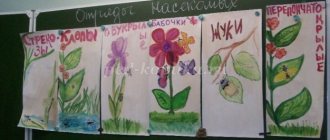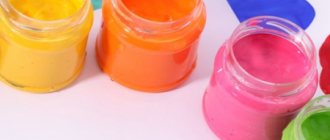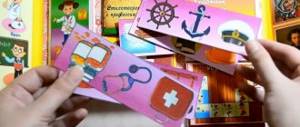What is foamiran?
Today, specialized departments for creativity offer a large selection of decorative elements for handicrafts. What is foamiran? This material is made from foam, ethynyl and vinyl acetate. These components provide it with plasticity.
By heating and mechanical action, each part can be given the desired shape and volume. The use of special molds helps to display the texture on the surface of the flower petal.
Varieties of foamiran for creativity
Today, in the departments for creativity and handicrafts, there is a huge selection of foamiran. There are several types of this decorative material. In turn, they differ from each other in their density. These include:
Iranian. The fabric is pleasant to the touch with a velvety texture. Parts made from it are durable and easily amenable to mechanical stress. The thickness of this sheet can be from 0.5 to 2 mm.
Turkish. It is fine-grained and elastic. Products made from it are of high quality and durable. After thermal exposure, the elements hold their shape perfectly.
Chinese. Foamiran of this type has a smooth surface and a large palette of colors. The thickness of each sheet does not exceed 2 mm.
After thermal exposure, the foam becomes too elastic. After carrying out this manipulation, it is necessary to quickly give it the desired shape.
Korean. The material is dense and velvety to the touch. The palette of color shades is very diverse. The thickness of the sheets ranges from 0.5 to 1.5 mm. It is used to create thin petals and small details.
Information about foamiran
Foamiran is not a completely new material for Russia.
These are thin sheets of colored porous rubber, brought to our country from Iran, Turkey, and China. Material thickness from 0.5 to 3 mm. It happens even more - 5 mm, as well as with patterns and effects, even with a relief, fleecy surface. They come across with patterns and sparkles, but not often. This soft sheet material is used in various types of needlework. The material is successfully used to create a variety of three-dimensional decor: brooches, hairpins, jewelry for brides, wreaths and garlands, dolls and accessories, refrigerator magnets and gift wrapping elements, appliques and three-dimensional crafts, postcards and various Scrapbooking elements.
Thin foamiran is used to make flowers. The material is easily cut with scissors, cut out with most shaped hole punches, takes the shape of molds, and is shaped by hand. The warmth of your fingers allows the flexible suede to slightly stretch or wrinkle under pressure, easily “remembering” its new shape!
Suede, or EVA (Foamiran) is very pleasant to work with. It is light and delicate, has a pleasant palette of pastel shades (including white and black). The main feature is the ability of foamiran to stretch slightly (up to 10%). This stretching is often enough for the material to take on and “remember” its new shape! The material is shaped especially well when exposed to the heat of human hands.
You can safely squeeze and twist the flexible suede, stretching it slightly. The material will easily take a new shape. However, excessive tension will cause the foamiran to rupture. The elasticity and relative strength of the material are due to the fact that foamiran contains ethylene and vinyl acetate. By the way, the slight smell of a new roll disappears quite quickly after opening its packaging.
On the modern market you can find foamiran (Foam) in various packaging: sheets, rolls, separately cut elements, etc. You can also try using foamiran as a colored flat base for decoupage, drawing (with crayons, pastels, felt-tip pens) and painting (gouache, acrylic, tempera, etc.). Foamiran is also suitable for relatively high temperature exposure.
For example, some masters recommend using it even in pyrography (burning technique). Foamiran has a slightly pronounced porous structure (“porous rubber”, “foam”), but at the same time has low water absorption.
Products made from plastic suede wash well, are resistant to atmospheric influences and chemicals, and therefore can be used for decoration both indoors and outdoors. Foamiran is non-toxic and harmless to the environment.
Advantages of plastic suede
There are several positive qualities of this material. These include:
- Plastic;
- Rich palette;
- Does not absorb moisture;
- Excellent mechanical impact;
- Does not lose its qualities during heat treatment;
- Easy to tint;
- Glued with rubber glue.
Professionals and even novice craftsmen will be able to work with it. Foamiran is non-toxic and absolutely safe for humans. It is recommended for making children's crafts. After unpacking the decorative sheets, an unpleasant odor may be emitted, but after a while it will completely evaporate.
Note!
- DIY fruit bouquets - TOP-200 photos with instructions for creating a bouquet of fruits with your own hands. Unconventional ideas with simple diagrams and work overviews
- Crocheted flowers: TOP-160 photos and step-by-step knitting pattern, review of finished products with your own hands. Crochet master class for beginners
- Paper lily - TOP 100 photos of the best product options. Master class with step-by-step diagrams and drawings for creating an origami lily with your own hands
What is needed for the job?
What tools and materials will you need to create flowers from foamiran for beginners? For this use:
- Scissors;
- A set of simple pencils;
- Acrylic paints;
- Color templates for making;
- Thin wire;
- Artificial stamens;
- Floral tape;
- Rubber glue;
- A set of molds for petals and leaves.
To make large flowers from foamiran, roll material is used. Most often this is a Chinese type of canvas. It is denser and holds its shape well.
Full size flowers
Giant flowers have been gaining popularity lately. They are called full-length or interior. They are made from various materials - foamiran, isolon, corrugated and designer paper.
There are quite a few tutorials on the Internet that tell in detail how to make life-size flowers from foamiran with your own hands. The manufacturing principle is the same as for ordinary flowers.
Petals are most often cut out from a whole sheet of A4 foamiran, 2-3 mm thick. For heating, you can use a household or construction hair dryer. For the stem, buy wire or make a stand from a piece of metal-plastic pipe.
These flowers are used to decorate the interior. Large flowers are widely used for decorating shop windows, photo zones, weddings, anniversaries, conferences and other events.
The life of a living flower is short. You can admire it for just a few days. Flower masters have long learned to make artificial flowers very realistic, indistinguishable from real ones. You can admire them for many years.
It’s not difficult to learn how to make flowers with your own hands. There are a large number of master classes on the Internet on making flowers from foamiran. They show and explain the entire process in detail.
A little imagination and desire, and you can pamper your loved ones and friends with delicate, elegant bouquets made of foamiran and unique gifts made from this unusual material.
Toning of plastic suede parts
A varied palette of shades helps you choose the right shade. However, in living nature, petals can contain several shades of colors. That is why tinting is used to create realistic details.
For this use:
Oil paints. This type of coloring composition is considered the most reliable. Tinted parts will delight you for a long time. The only drawback of this method is that it takes a long time to dry after application.
Acrylic sets. These paints are very easy to use. They dry quickly after application. An art brush is used to create subtle drawings. The disadvantage of acrylic paint is its ability to crack after some time.
Note!
Crochet rose - diagrams and descriptions of how to crochet a rose with your own hands. Crochet technology + interesting craft ideas
- DIY edible bouquets - TOP 130 photos with instructions for creating a bouquet with your own hands. Creative ideas with simple diagrams and photos of finished works
- Craft primroses - simple instructions for creating crafts from scrap materials. Schemes of beautiful DIY products + photo reviews
Pastel. These paints are available in chalk form. They are applied using a damp cloth. To create a rich shade, tinting is carried out several times.
Decorative cosmetics. For work, use eye shadow, decorative lip pencils or lipstick. Only an experienced professional can work with such paints.
Templates for creating flower arrangements
Color templates make the process of creating decorative items much easier. A variety of shapes and petals are developed by designers. This allows you to create the most natural products.
These stencils can be downloaded from the Internet or purchased in specialized departments for creativity. After this, the drawn parts are carefully cut out and applied to the surface of the foamiran.
To give texture and volume to the workpieces, molds are used. These structures are made of dense silicone. When exposed to elevated temperatures, the material becomes more plastic and pliable.
Note!
- Crafting tulips from paper - TOP-100 photos of interesting ideas for creating tulips from paper + simple instructions for beginners
- Mimosa craft: TOP-160 photos of simple and complex crafts. Master class for children and adults on making mimosa with your own hands
- DIY napkin flowers - a detailed master class with simple diagrams. Non-standard solutions for creating flowers + photos of finished crafts
Professional tips for creating flower arrangements
When working with plastic suede, you need to follow several recommendations that will allow you to create realistic products.
In the process of creating flower preparations, you need to know a few basic secrets:
- Different batches and brands of foamiran may vary slightly in shade. That is why it is important to correctly lay out the templates, taking into account the color shade;
- To create an even punch, it is necessary to place paper under a sheet of foamiran;
- Hot glue from a hot glue gun can burn through a part. When working with a glue gun, it is important to be especially careful;
- Do not heat already formed parts. Repeated heat treatment negatively affects the structure of plastic suede;
- Products made from foamiran quickly fade in the sun.
You can start working
The first thing we need to make flowers from foamiran with our own hands is diagrams and templates.
Schemes and templates of leaves and flowers from foamiran
Each plant has its own unique shapes of petals and leaves, so you will need a lot of patterns. Here are some examples of petals and leaves. To understand which form to choose, you should take a closer look at the real flower.
YOU WILL NEED IT
You can download flower and leaf templates from foamiran quickly and for free!
Flower templates from foamiran
Foamiran leaf templates
The sequence is standard: cut out templates from cardboard, transfer them to a sheet of foam using a pencil, pen, or press the outline with a toothpick.
Basic assembly techniques and principles
Petals and leaves of fresh flowers have texture and volume, so our blanks should be pulled and twisted a little. There are several basic techniques with which flat, lifeless material will turn into quivering petals:
- Molds and weiners . In order to transfer the relief of these matrices to the workpiece, it must be heated with an iron, placed on a mold, covered with weiner and pressed firmly for a few seconds. That's it, a beautiful leaf with real veins is ready. You can quickly produce many parts this way.
- Bulki . The workpiece should also be first heated, then a hemisphere should be squeezed out with balls of various diameters to create a three-dimensional petal. The method is suitable for forming parts from thick foamiran.
- Corrugated paper can also serve as a “mold”, you just need to take floral paper with a density of 120 g with flute A or B. This option will work for thin revels.
- Manual shaping . Soft and pliable foam rubber can be folded like an accordion, rolled between your fingers, and stretched lengthwise and crosswise. In this way, the desired shape is acquired, but the texture is erased.
Plastic suede is easy to shape by hand
When all the necessary preparations are formed, you can begin to collect the flower. The base is wire frames, foil or foam balls, and beads. The consumption of foamiran depends on the size of the flower, so you must first select the necessary templates, count how many petals and leaves you will need, and mark future blanks on the sheet.
Video-MK on making roses, basic techniques for working with the material
Useful tips for creating flowers from foamiran
To create not just copies of fresh flowers, but masterpieces, you should know some secrets:
- In different batches of plastic suede, the shade of the same color may differ. Therefore, if you need to make many identical colors or a large composition in one shade, then you should calculate the required amount of material in advance.
- To ensure smooth edges when punching with a figured hole punch, you should place a regular sheet of paper on top of the foamiran.
Blanks for mini flowers are ideally obtained using a figured hole punch
- When working with a hot gun, you need to be careful - if a drop of silicone drips onto the foam, it will melt it.
- Formed parts cannot be reheated, as this causes the relief to disappear and the finished products lose their shape. For this reason, plastic suede and products made from it should be stored away from heat sources.
- When heated slightly, foamiran stretches, and when overheated, it contracts.
- Long exposure to direct sunlight causes bright colors to fade.
- The sheets must be stored straightened and the finished products in a loose state, otherwise creases will form that will be almost impossible to straighten.
The material is very delicate, so creases form easily
- Foamiran can be made thinner; to do this, the workpiece needs to be stretched between your fingers, and large sheets should be ironed through the paper with a warm iron and, while the material is still warm, stretch it. This procedure will help get rid of air bubbles in the foam rubber, compact it and reduce its thickness.
- Plastic suede has a moderate water-repellent effect, so products made from it can be washed in soapy water and, if there are no small parts or wires, even machine washable.
- Neither a hot gun nor liquid glue is suitable for fastening particularly small parts - such elements are sewn together like fabric. But due to the nature of the material, the needle must be thin.
- Sometimes the finished flower begins to straighten. This is due to the fact that when painting with paint, a lot of moisture was applied, it was absorbed into the pores of the rubber and made it soft.
To avoid damaging the petals, apply the paint with a sponge.
- If the foamiran is glued to the iron, then the temperature is set to high, the maximum allowed mode is wool or silk.
Take a look at this master class; using the example of making a daisy, it describes techniques for shaping using an iron.
Of course, these are not all subtleties, for example, it is better to cut thin strips not with scissors, but with a sharp stationery knife, you can draw thin veins with a felt-tip pen, and shade the edges and create an ombre effect with a cotton pad. There are so many craftswomen, so many secrets. Once you start working with foamiran, the material itself will tell you how best to process it.
Author - Anna Devushkina
As an example, look at these photos of a master class on creating a headband from dandelions. Here, thin cutting, heating, rolling, and decorating the stem with tape are used.
Master class on creating a children's headband with dandelions
Making flowers from foamiran with your own hands is quite simple. For beginning needleworkers, you need to choose simple floral decoration options. At the first stages of the work process, it is necessary to avoid realistic tinting and the use of special texture molds.
We bring to your attention a detailed master class on creating flowers from foamiran for decorating a children's headband. To work you will need:
- One sheet of yellow foamiran;
- Templates for creating flowers and leaves;
- Thin wire;
- Dark green floral ribbon;
- Sharp scissors;
- Glue gun.
Beginning craftsmen can use patterns for creating flowers from foamiran. It clearly indicates the order of actions, starting from the number of elements and methods of fixing them with each other.
The stages of creating a flower include the following points:
Carefully cut out 8 circles from green foamiran. They will act as a receptacle. We carefully turn the edges into fringe using sharp scissors. We cut out 8 strips 10 cm long from yellow foamiran. We decorate the upper borders in the form of a fringe with sharp scissors.
Next, we attach a yellow strip with fringe to one edge of the floral wire. We begin to carefully twist it while forming a dandelion bud.
At the bottom of the green element we make a through hole and thread a wire with a yellow flower. This way we have a spring flower prepared.
Degrease the surface of the children's headband with an alcohol solution. We wrap the plastic base with floral tape to create a dark green background.
Now we carefully fix the dandelions on the surface of the hair accessory using a heat gun.
What you will need
After getting acquainted with this unusual material, many people will have a question about how to make a flower from foamiran with their own hands and what will be needed for this.
Minimum set for beginning flower makers:
- for flowers and leaves - green color and bud shade, no more than 1 mm thick;
- for stems - wire, green paper or tape;
- to form buds - toothpicks or ear sticks;
- glue gun or glue;
- scissors, pencil, ruler;
- a device for heating parts - an iron, curling iron, candle, gas burner or lighter;
- DIY patterns and patterns for flowers made from foamiran.
Important! When heating parts, precautions must be taken.
Additionally, you may need pastel to color the edges and bases of the petals. If the flower has stamens, then they can be made from yellow yarn or threads, treated with office glue or paste for rigidity.
It should be remembered that foams shrink when heated, so the pattern of the petals should be slightly larger than the planned size of the bud.
If you decide to make flower making your hobby, then it is worth purchasing bulbs and molds - special forms for giving volume to the petals.
Making a rose from plastic suede
How to make flowers from foamiran so that they are no different from a real plant? To date, hundreds of techniques have been developed that allow you to make petals realistic and textured.
We present to your attention instructions on how to make flowers from foamiran for interior decor. The composition will consist of 5 red roses.
To create roses it is important to prepare:
- Red foamiran 6 sheets;
- Green sheet of plastic suede 6 sheets;
- Sharp scissors;
- Templates;
- Simple pencil;
- Acrylic paints for tinting;
- Thin wire;
- Floral ribbon.
We cut out 15 pieces of different sizes from red suede. Using an iron we add volume. Let's start preparing the leaves. On green leaves we cut out 10 leaves for one flower.
Using acrylic paints we carefully tint the surface of the workpiece. We distribute the coloring pigment to the edges, thereby creating the depth of the pink leaf.
Let's start assembling the bud. We place petals of smaller volume in the center. We distribute large sizes along the edges. We glue all the parts to each other using a heat gun. As a result, the flower turns out to be voluminous.
Let's start assembling the green leaves. Carefully fix the thin wire on the back side. We collect rosettes from leaves. Each should contain 4 sheets.
Let's start assembling the entire flower arrangement. We fix the bud and leaf plates to the wire. We wrap empty areas with floral tape to create an imitation of a stem. Using the same method, we make four more flowers.
Master class “Purple flower from foamiran”
For work we will need:
Foamiran (purple and olive colors), Scissors, Glue gun Mount (for a brooch, hairpin or other type of decoration)
1. Cutting
Let's cut a long strip, about 3 cm wide, from a roll of plastic purple suede. Next, cut the strip into relatively equal rectangles, from which we will then cut out future petals.
The shape of the petals can be quite arbitrary. In our case, they resemble an oval, one part of which is slightly cut off. Now we twist the opposite edges of each petal with our hands, and then slightly stretch its middle with our fingertips. We will all need 20-25 approximately identical petals.
2. Gluing
Once each petal has been given a new curved shape with wavy edges, you can begin the gluing process. Warm up the glue gun or take strong glue. Closer to the “cut” part of the petal, apply a little glue and begin to form a flower bud. In the center of the bud you can place a small base ball, rolled from foil or other suitable material. Glue the purple petals one on top of the other, pressing them tightly together. With a glue gun the process will go faster; with “cold” types of glue the process may take a little longer.
3. Blooming bud
This flower is formed in such a way that all its petals are glued relative to each other at approximately the same level. Thanks to this, the result is an even and beautiful blossoming bud. Now you can begin to form the green parts of the plant.
4. Calyx and sepals
From an olive-colored foamiran sheet we cut out long strips - about 7-8 cm, no more than 1 cm wide. Then we cut them into two equal parts lengthwise almost to the very end. We twist the green elements of the flower with our fingers into tight flagella. As they unwind, the future sepals acquire a fairly natural shape. Cut out one or two olive-colored circles, about 3 cm in diameter, to form the base of the flower. It is to this part that we can then glue the appropriate mount for our decorative flower.
Flower made of plastic suede (1 part) from Sangina.ru
Making chamomile from Thomas
To work you will need the following tools and materials. This list includes:
- Two sheets of white foamiran;
- Pattern of chamomile, heartwood;
- Floral tape;
- Scissors;
- Simple pencil;
- Iron to add volume;
- Yellow pastel.
We transfer the flower templates onto a white sheet of plastic suede. To create a chamomile you will need 5 blanks. Turn on the iron and process each petal. When the base of the workpiece warms up a little, give it the desired shape.
We make the core from yellow fom. To do this, cut out a strip 1 cm wide and 8 cm long. Use scissors to make a fringe in the upper part. Glue it to the metal wire and gradually twist it.
Now we fix the white blank onto a metal wire with a core. Carefully form the flower. We will mount the stem from wire. We wrap the metal surface with floral tape.
Master class on making lilies
Lily is the princess of the flower world. Its large bright inflorescences are a recognized symbol of purity and innocence.
Christians called this flower a symbol of the Mother of God and believe that it came from the tears of the ancestor of mankind, Eve.
Step-by-step production of an artificial lily in a master class:
| Illustration | Description of action |
| For a lily you will need to stock up on ready-made stamens and pistil. | |
| The base of the flower is held together with adhesive tape. The pistil is in the center, the stamens are around it. | |
| After fastening the parts, unfold them as shown in the photo. | |
| To create the texture of the petals, you will need special molds - they can be found in handicraft stores. | |
| Place the mold on the mold and heat it with an iron, then press the parts tightly until they cool. | |
| Cut the petals with veins along the contour with scissors. | |
| Each petal will need a rigid frame so that it bends in the desired direction. For the frame, thin wire is used, wrapped in material to match the petal. | |
| Gif 2 The wire is carefully glued in the center of each petal. | |
| SKR 8 The workpiece needs to be slightly bent, as shown in the photo. | |
| SKR 9 Using a lighter, heat and slightly stretch the edges of the workpiece. | |
| SKR 10 Lightly tint the base of the petals with pastel. | |
| SKR 11 Make lily leaves in a manner similar to petals. Use appropriate molds. | |
| SKR 12 Collect the petals and leaves using a strip of green masking tape. |
How to care for compositions?
Proper storage and care of a flower arrangement helps prolong its decorative qualities. To do this, you need to follow a few tips:
Products must not be stored on sunny windows;
To remove excess, you can use a special brush;
You can get rid of contamination by using a soap solution;
The flower arrangement must be dried for 5 hours.






